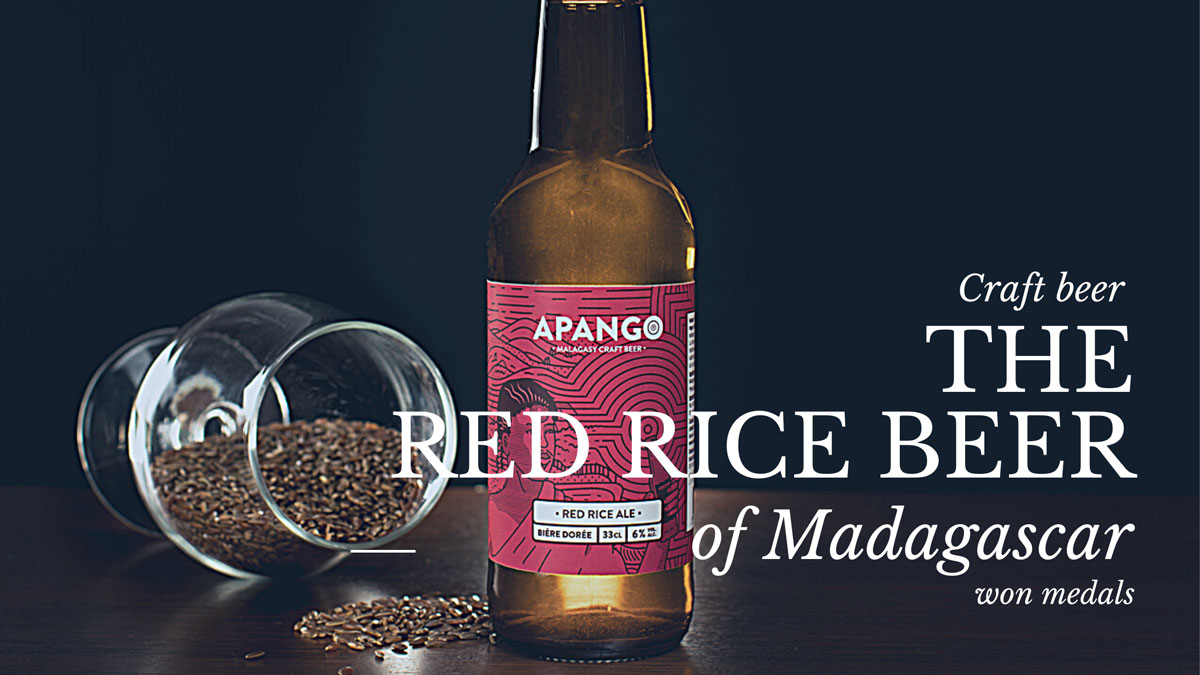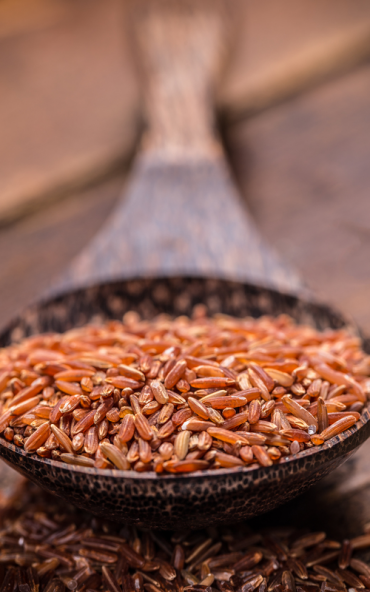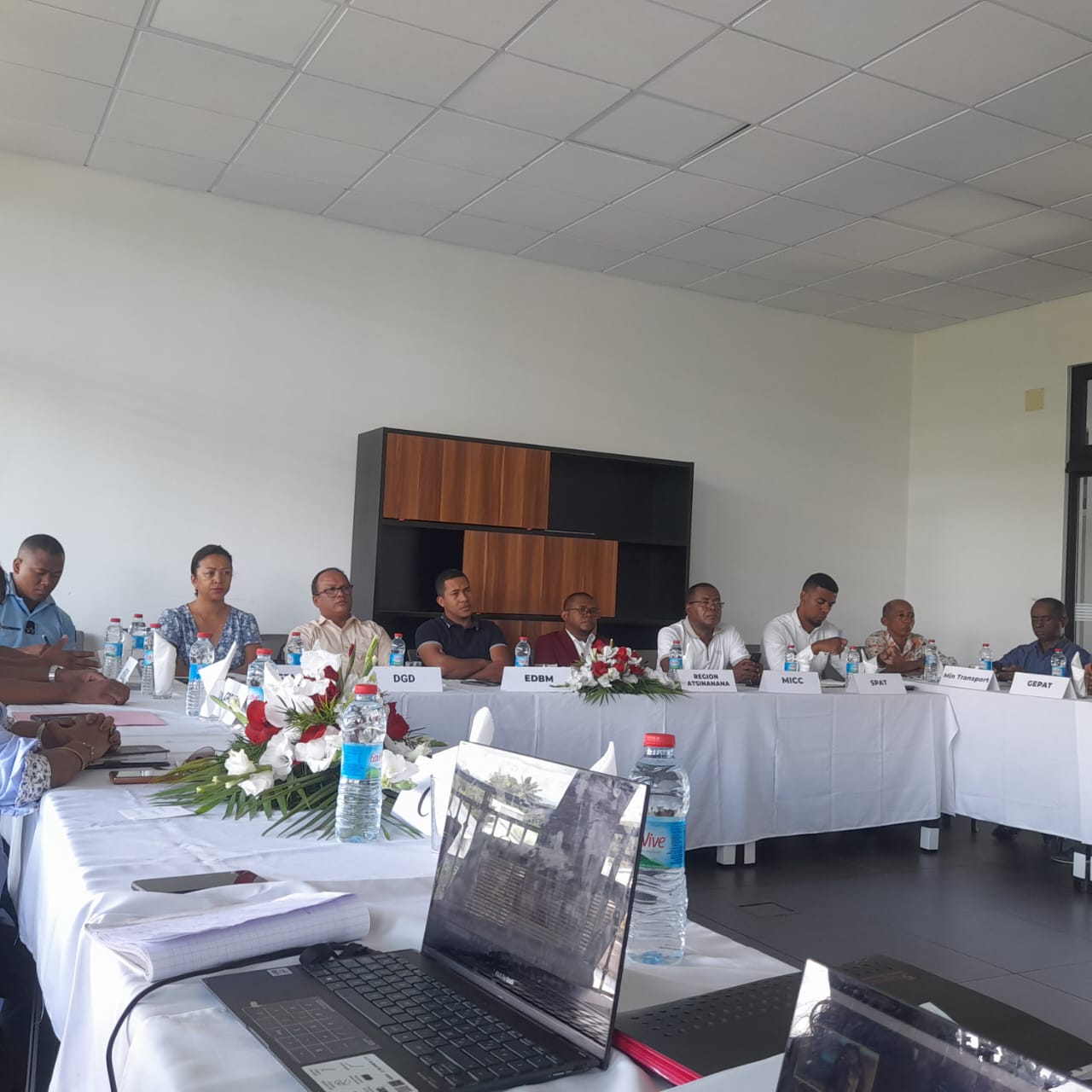Medals to the red rice beer of Madagascar

Medals to the red rice beer of Madagascar
Craft beers are all the rage in Europe. Apango, a brand-new French beer label, created by a Malagasy man, has scored a huge success only a year after its creation. The newcomer on this market of giants owes its dazzling journey to the red rice of Madagascar. Indeed, medal-holder on several major international ale contests, Apango does honor the Red Island’s terroir.
By roasting the “Rojo Mena” variety, Malagasy red rice, in its recipe, Apango is one of the very few rice beer brands in Europe.“Apango is made with red rice from Madagascar, that is why it has been so successful. If I had made it with another variety of rice, it would not have had the same effect, nor generated as much passion.” proudly states Ratia Rabemananoro, the brand founder.
Apango has also a common point with the Japanese “sake” by its floral and pleasing taste. This subtle and fruity taste is due to the fermentation of sugar in the rice.
Numerous medals in the prize list
Launched in 2020, in the midst of lockdown, Apango started with €15.000 in investment. In barely one year, it is perfectly ranked on a French market of more than 10,000 beer references for a global value of €4.1 billion.
Directly sourcing quality rice from Alaotra region, the cradle of rice farming in Madagascar, Apango has been awarded two thanks to its originality and exoticism. It won a silver medal at the Lyon International Contest, in the “Pale ale” category and another one at the French Beer challenge in the “Wheat and other cereal beers” category. Judged by well-known experts, Apango won its titles over nearly 1,500 other beer brands!

The Madagascar touch is a selling label ©Apango beer
Using a nomadic brewery concept, Apango is produced up to 10hl per month. “Going from brewery to brewery enables to vary and to refine the taste of the beer,” explains Ratia Rabemananoro. 70% of it is sold to restaurant owners, while the rest is purchased by individuals from France, the Netherlands, and Germany.
The high potential of Malagasy rice
Madagascar produces 4,231,000 tonnes of paddy per year (in 2019) with full capacity productions for the three rice granaries of the island: Alaotra Mangoro (in the East), Vakinankaratra (in the Center), and Itasy (in the Center). Moreover, the Big Island ranks as the second African sub-Saharan country in terms of irrigated agricultural areas, that is to say, 30% of farmed land with 1 million ha of surface area. In total, 37 million ha are available for both irrigated and non-irrigated rice.
With an increase of 5% compared to 2018, the production still has brighter prospects through numerous irrigation and seed improvement projects, etc. Rice export in Madagascar currently reaches a maximum of 108 tonnes per year, valued at USD106,000. The majority of this production is exported to France and the United States.
To ensure optimum development, the processing is a perfect alternative to offset any production losses. In fact, it has been observed that in Madagascar, 15 % to 20 % of rice is lost at the post-harvest stage. In addition, in Asia, it has been proved with sake, soju, Choshu… that rice has an exceptional processing potential. These wines and hard liquors, terroir, and the traditions of Far Eastern countries are conquering the world with their identity and craftiness.

In Madagascar, 15% to 20% of the rice that is lost from the post-harvest stage can be processed ©EDBM
The Korean soju even became the best-selling liquor in the world. A single brand like Jinro manages to sell 550,000 tonnes per year on the Asian dragon and tiger markets. As for Sake, it has conquered Anne-Sophie Pic who is the female chef with the most Michelin stars in the world as well as the Ritz, the Bristol, the Plaza Athénée … where it appears on the wine list.
It is obvious that rice-based spirits are becoming increasingly popular worldwide. Thanks to its medals and above all to the red rice of Madagascar, Apango would like to conquer the French catering market and even aims at creating one branch in Madagascar. “For me, the Malagasy diaspora’s role is to spread its culture across the world,” adds Ratia Rabemananoro.

External sources
- https://www.scidev.net/afrique-sub-saharienne/news/la-transformation-de-riz-local-r-duit-les-pertes-post-r-colte/
- https://apango.beer/
- https://www.journaldunet.com/ebusiness/commerce/1498377-marche-de-la-biere-artisanale-ces-brasseries-qui-defient-les-industriels/
- https://www.brasseurs-de-france.com/tout-savoir-sur-la-biere/le-marche-de-la-biere/
- https://www.larvf.com/le-sake-japonais-conquiert-la-france,4655533.asp
- https://www.africarice.org/post/vers-une-autosuffisance-en-riz-%C3%A0-madagascar-africarice-et-ses-partenaires-concourent-%C3%A0-l-augmentat






